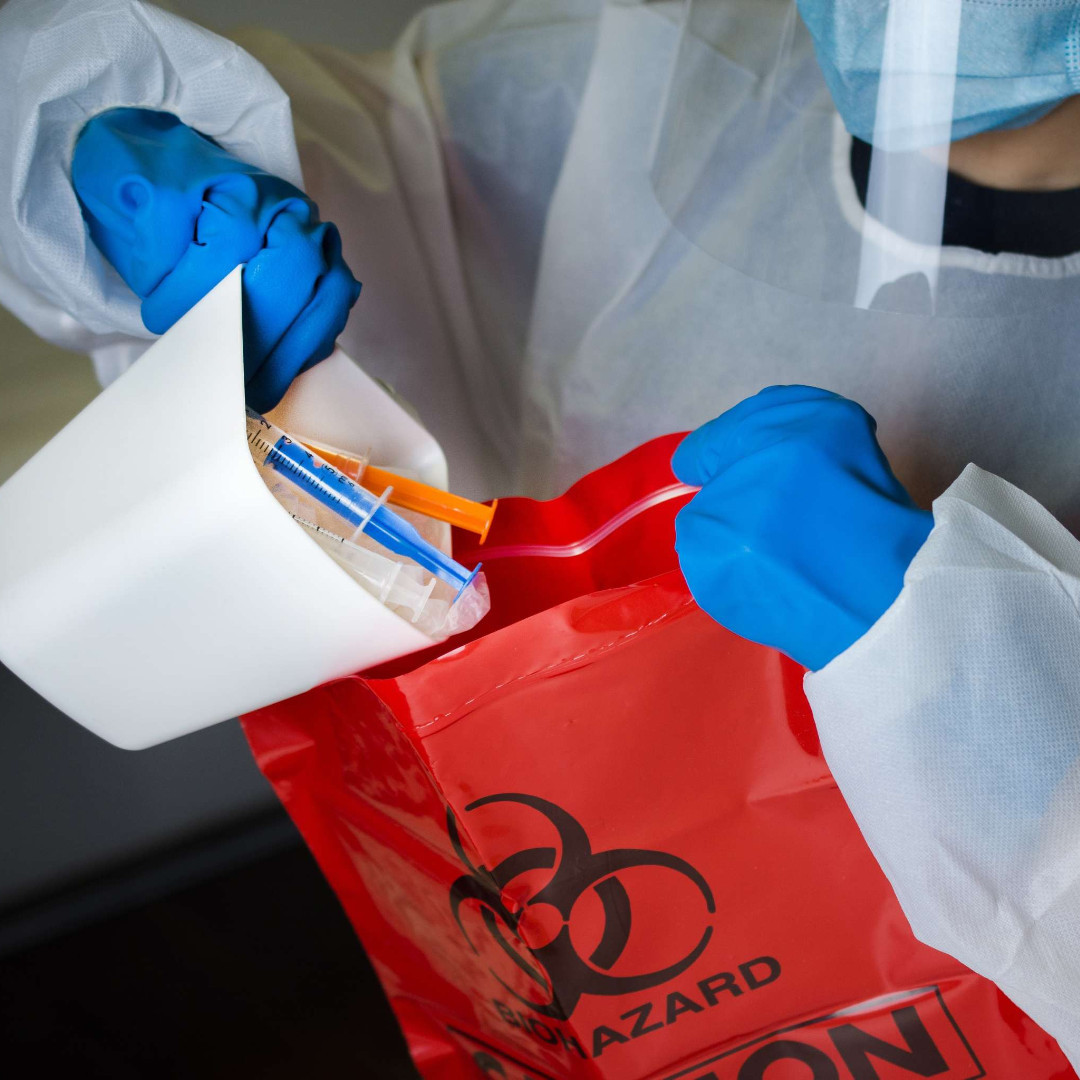Since the 1988 Medical Waste Tracking Act Expired in 1991
Medical waste is primarily regulated by state environmental and health departments. EPA has not had authority, specifically for medical waste, since the Medical Waste Tracking Act (MWTA) of 1988 expired in 1991. It is important to contact your state environmental program first when disposing of medical waste. Contact your state environmental protection agency and your state health agency for more information regarding your state’s regulations on medical waste.
Other federal agencies have regulations regarding medical waste. These agencies include Centers for Disease Control (CDC), Occupational Safety and Health Administration (OSHA), U.S. Food and Drug Administration (FDA), and potentially others.
History
Concern for the potential health hazards of medical wastes grew in the 1980s after medical wastes were washing up on several east coast beaches. This prompted Congress to enact The MWTA of 1988. The MWTA was a two-year federal program in which EPA was required to promulgate regulations on management of medical waste. The Agency did so on March 24, 1989. The regulations for this two year program went into effect on June 24, 1989 in four states – New York, New Jersey, Connecticut, and Rhode Island and Puerto Rico. The regulations expired on June 21, 1991.
EPA concluded from the information gathered during this period that the disease-causing potential of medical waste is greatest at the point of generation and naturally tapers off after that point. Thus, risk to the general public of disease caused by exposure to medical waste is likely to be much lower than risk for the healthcare workers.
After the MWTA expired in 1991, states largely took on the role of regulating medical waste under the guidance developed from the two year program.
Most states have since further developed their own programs resulting in each state program differing significantly from each other.
Disposal of Medical Sharps
Improper management of discarded needles and other sharps can pose a health risk to the public and waste workers. For example, discarded needles may expose waste workers to potential needle stick injuries and potential infection when containers break open inside garbage trucks or needles are mistakenly sent to recycling facilities. Janitors and housekeepers also risk injury if loose sharps poke through plastic garbage bags. Used needles can transmit serious diseases, such as human immunodeficiency virus (HIV) and hepatitis.
See the following documents for information on proper management of needles and sharps:
- Community Options for Safe Needle Disposal
- Protect Yourself, Protect Others: Safe Options for Home Needle Disposal
- Safe Needle Disposal – a project of NeedyMeds – promotes public awareness and community solutions for safe disposal of needles, syringes, and other sharps.
- Centers for Disease Control and Prevention: Sharps Safety for Healthcare Settings
Medical Waste Incineration
More than 90 percent of potentially infectious medical waste was incinerated before 1997. In August of 1997, EPA promulgated regulations creating stringent emission standards for medical waste incinerators due to significant concerns over detrimental air quality affecting human health. EPA’s Office of Air Quality Planning and Standards continues to review and revise the Hospital Medical Infectious Waste Incinerator (HMIWI) standards as required most recently in May of 2013.
Alternative Treatment & Disposal Technologies for Medical Waste
Potential alternatives to incineration of medical waste include the following:
- Thermal treatment, such as microwave technologies;
- Steam sterilization, such as autoclaving;
- Electropyrolysis; and
- Chemical mechanical systems, among others.
With EPA’s tighter HMIWI standards, the number of HMIWIs in the United States has declined since 1997. This has lead to an increase in the use of alternative technologies for treating medical waste. The alternative treatments are generally used to render the medical waste non-infectious then the waste can be disposed of as solid waste in landfills or incinerators. Many states have regulations requiring medical waste treatment technologies to be certified, licensed or regulated. Check with your state for additional regulation regarding treatment of medical waste.
EPA has jurisdiction over medical waste treatment technologies, which claim to reduce the infectiousness of the waste (i.e. that claim any antimicrobial activity) by using chemicals. This jurisdiction comes from the Federal Insecticide, Fungicide and Rodenticide Act (FIFRA). Companies wishing to make such claims must register their product under FIFRA through EPA’s Office of Prevention, Pesticide, and Toxic Substances (OPPTS), Antimicrobial Division.
This content, Who Regulates Medical Waste?, was originally shared by epa.gov.











